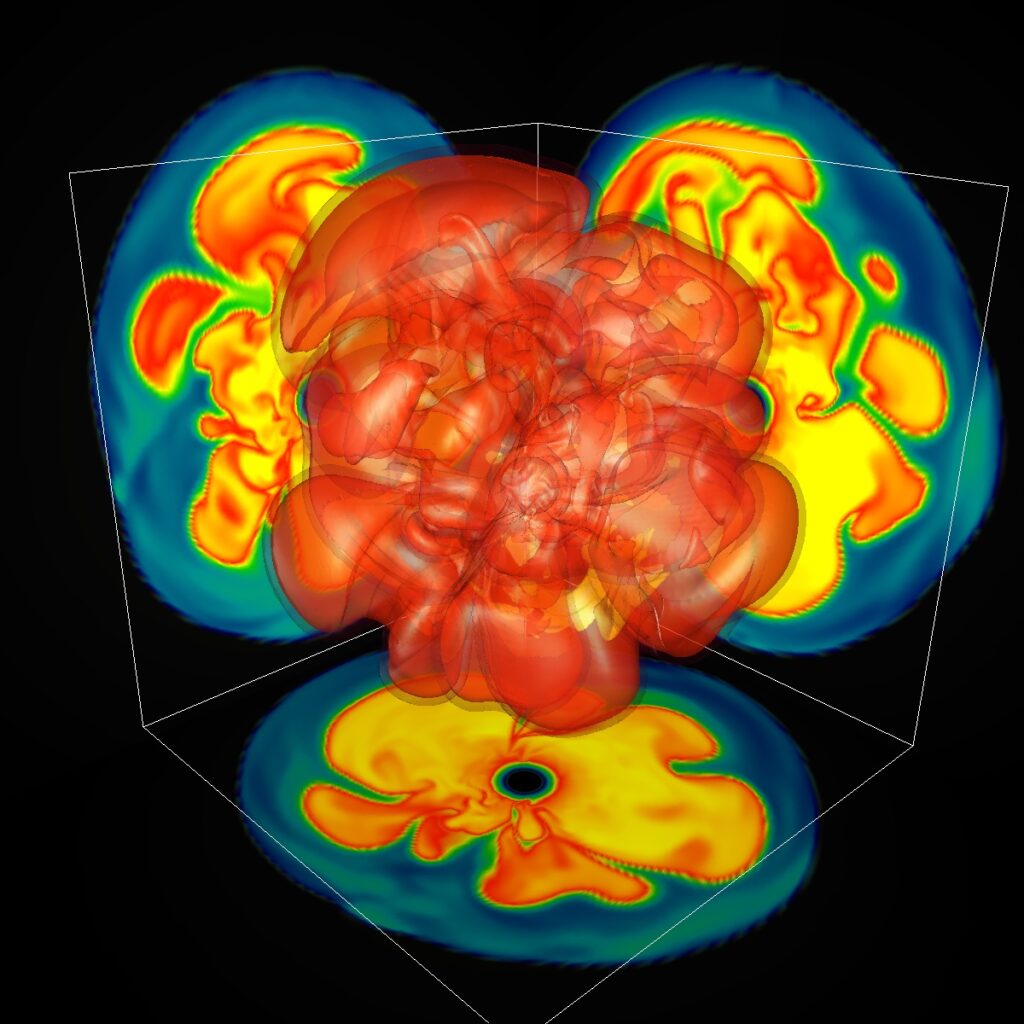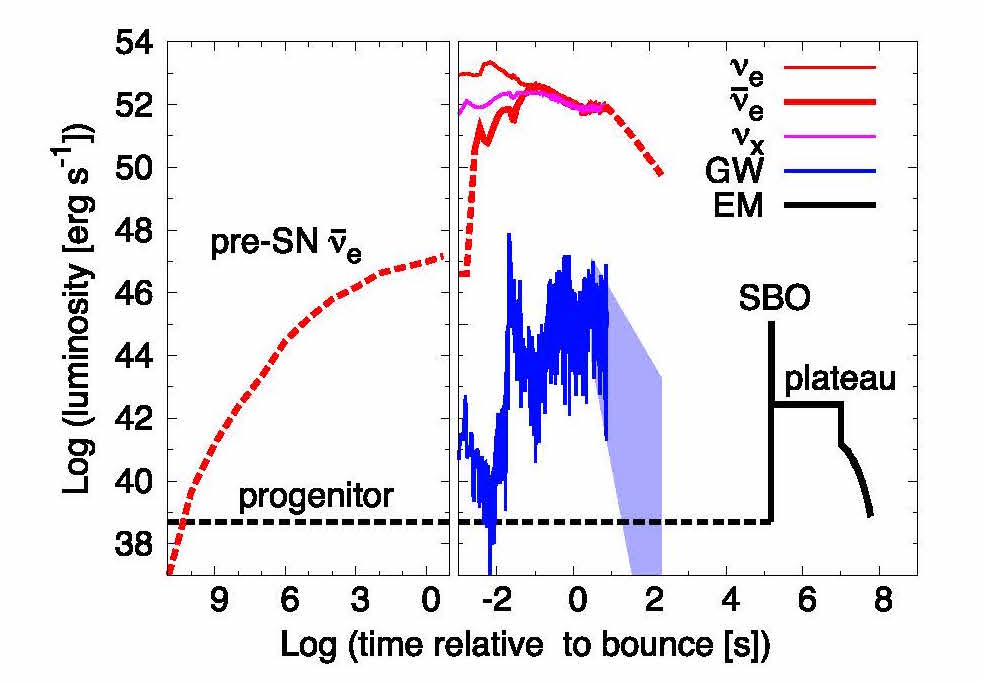Division of Science, NAOJ
There is a wide variety of research activities in this division, and it covers a considerable part of modern astronomy. Here we describe activities covered by faculty staff members. Of course, there are a lot of postdocs doing independent research in addition to the contents below. There are many interactions beyond the sub-categories in astrophysics in this one of the largest groups of theoretical astrophysics in Japan. Ongoing research areas are mainly categorized as follows;
- Formation Theories of Stars and Planets (Kokubo, Nomura, Nakamura, Kataoka, Iwasaki)
- Properties of exoplanets, exoplanetary atmosphere (Ikoma, Fujii)
- Cosmology, Formation Theories of Galaxies or the Large Scale Structure, and related areas, such as Particle Physics and Nuclear Physics (Ouchi, Hamana, Kohri)
- High Energy Astrophysics, including Solar Physics, Cosmic Rays (Tominaga, Takiwaki, Moriya, Dainotti)
- Black hold astrophysics (Machida)
- Properties of galaxies (Harada)
- Development of High Accuracy Numerical Hydro Simulation Method (Kokubo, Iwasaki)
The following description is a little old and should be updated. So you should only use them as a reference.
Formation of Stars, Planets, and Galaxies
Star Formation (Iwasaki)
Star formation has attracted many astronomers, observers and theoreticians. Here, in the Theoretical Astrophysics Division, dynamical process of star formation is studied using hydro- and magnetohydrodynamical simulations. How the fundamental properties of new born stars, such as masses, angular momenta, magnetic fluxes, multiplicity of binaries, and so on, are determined – this is our goal.
Formation of Planetary Systems (Kokubo)
Satellite-ring systems are formed around planets as a by-product of planet formation. In the solar system, there is a variety of satellite-ring systems from the single large Moon of the Earth to Saturnian large ring systems with multiple satellites. To clarify the origin and the evolution of these satellite-ring systems is our main goal. We are now studying the origin of a single giant satellite such as the Moon and Charon.
Formation of Satellite-Ring Systems (Kokubo)
Satellite-ring systems are formed around planets as a by-product of planet formation. In the solar system, there is a variety of satellite-ring systems from the single large Moon of the Earth to Saturnian large ring systems with multiple satellites. To clarify the origin and the evolution of these satellite-ring systems is our main goal. We are now studying the origin of a single giant satellite such as the Moon and Charon.
Physics of the interstellar medium and star formation (Doris Arzoumanian)

Understanding how stars form is central to astrophysics. Low mass stars, like our Sun, may host planets where life could emerge, and the most massive stars govern the physics and the chemical enrichment of the interstellar medium of galaxies. Molecular filaments have been recently identified as the main sites of star formation. Our main research is thus to derive a consistent scenario for the formation of these filaments and study their fragmentation into star forming dense cores. For that, we use various observational tracers of dust and gas, in total and polarized emission, to investigate the role of the main physical processes (turbulence, gravity, magnetic field) at play in the interstellar medium. We use observations obtained with space and ground-based facilities such as the Herschel, Planck, JWST, APEX, IRAM-30m, Nobeyama-45m, ALMA, and JCMT telescopes. In parallel, we confront the observational results with magnetohydrodynamic numerical simulations and theoretical models to derived physically motivated understanding of the star formation process.
High Density Objects, High Energy Astrophysics, Nuclear Astrophysics
Explosion Mechanisms of Core-Collapse Supernovae (Takiwaki)

Core-collapse supernovae are among the most energetic explosions in the universe making the catastrophic end of massive stars. Since they are related to the formation of compact objects such as neutron stars, black holes, and magnetars, understanding of their physics has been of wide interest in the astrophysical society. In spite of the importance, one can not still tell the explosion mechanism clearly. By performing the numerical simulations, we study the explosion mechanism and the formation mechanisms of the relevant compact objects, paying particular attention to the effects of stellar rotation and magnetic fields on the neutrino-heating mechanism.
Multidimensional neutrino transport simulations coupled to the magnetohydrodynamics are inevitable to investigate the formation mechanisms of compact objects mentioned above. The fact that neutrinos are fermion with their cross sections being dependent on their energies makes it impossible to find the solution of the Boltzmann neutrino transport equations without the help of the numerical computations. We are developing the formalisms and codes to solve the multidimensional Boltzmann neutrino transfer equation.
Multi-Messenger Astronomy of Core-Collapse Supernovae (Takiwaki)

Core-Collapse supernovae emit neutrinos and gravitational waves as well as photons. The accumulation of the all information provides smoking-gun evidences for the nature of the explosion. Here we explain importance of neutrino and gravitational wave emissions.
Neutrino astronomy is becoming reality. In fact, the detection of neutrinos from SN1987A by the Kamioka group was a historical event. More advanced neutrino detectors are running currently. The importance of the study of supernova neutrinos is that one may determine the fundamental properties of neutrinos themselves (such as the mixing angles, mass-hierarchy) by comparing the theoretical predictions with the observations. By studying the neutrino oscillations in the realistic supernova models, we try to put the severe constraint on the unknown neutrino parameters. We also investigate the neutrino interactions in the dense and highly magnetized stellar cores, aiming to study the flare events of the magnetars.
When the collapse dynamics in massive stars deviates from the spherical symmetry, gravitational waves (GWs) can be emitted. As for the causes of the asymmetry, stellar rotation has been considered to be most promising. In addition, recent studies suggest that convections, magnetic fields, and anisotropic neutrino radiations can also produce the GWs. By performing the realistic numerical simulations, which take into account the new ingredients, we calculate the waveforms of GWs and discuss their detectability by the currently running laser interferometers, such as TAMA300 and LIGO. Furthermore, we study the gravitational wave background from gamma-ray bursts and the first stars aiming to understand what information about their central engines can be obtained from the GWs.
Cosmology and Large-Scale Structure
Cosmic shear statistics (Hamana)
Cosmic shear refers to angular correlations in the apparent shape of distant galaxies arising from the gravitational lensing effect of foreground structures. Via lensing, correlations in the mass distribution are imprinted in the coherent distortions of the galaxy images. Cosmic shear statistics thus provide unique information on the matter distribution and its evolution.
Verification of New Physics Explored in the Beginning of the Universe
and High-Energy Astrophysical objects (Kohri)
Unexplained phenomena occurring at the beginning of the universe and in high-energy astronomical objects such as black holes and neutron stars may be attributed to new physics beyond the standard model of elementary particles, such as supergravity theory. Theoretical studies that make full use of general relativity, quantum field theory, and mathematics are needed to elucidate these phenomena. The Universe was born 13.8 billion years ago and has expanded from a fireball state called the Big Bang to its present large form. The fireball was created at a cosmic age of about 0.01 second or less, and its temperature was at least 100 billion degrees Celsius/Kelvin or higher, which cannot be understood without the use of particle physics. Also, before the fireball was formed, there was a period of time known as inflation, when the Universe expanded faster than the speed of light. It is believed that inflation is also caused by a scalar field, a type of undiscovered elementary particle. The energy that makes up the current Universe consists of only about 5% visible matter (stars, the sun, etc.), 25% dark matter (invisible matter), and 70% dark energy, which cannot even be called matter. What are the elementary particles that cause inflation? What are dark matter and dark energy? And why is there more visible matter than its antimatter? To solve these problems, we need to examine all the multi-messenger astronomical observations of electromagnetic waves, neutrinos, gravitational waves, cosmic rays, etc. at all wavelengths of the future observation programs in comparison with new theoretical predictions. This theme is a theoretical study that will open the door to a new physics that will rewrite the standard textbooks.
Development of High Accuracy Numerical Hydro Simulation Method
Development of High Accuracy Numerical Hydro Simulation Method (Iwasaki)
Numerical simulations in astrophysics have to have both high accuracy and wide dynamic range. For example, in the dynamical contraction from a molecular cloud core to a protostar, the density increases ~1013 times while the size decreases ~10-6 times. This comes from the self-gravity. We are developing numerical methods to overcome the above difficulty, which are called Nested-Grid method and Adaptive Mesh Refinement.
Integrator for N-body Problems (Kokubo)
High-speed and high-accuracy integrators are essential tools for the study of N-body problems. We are developing time-symmetric and symplectic integrators suitable for planetary N-body problems.

